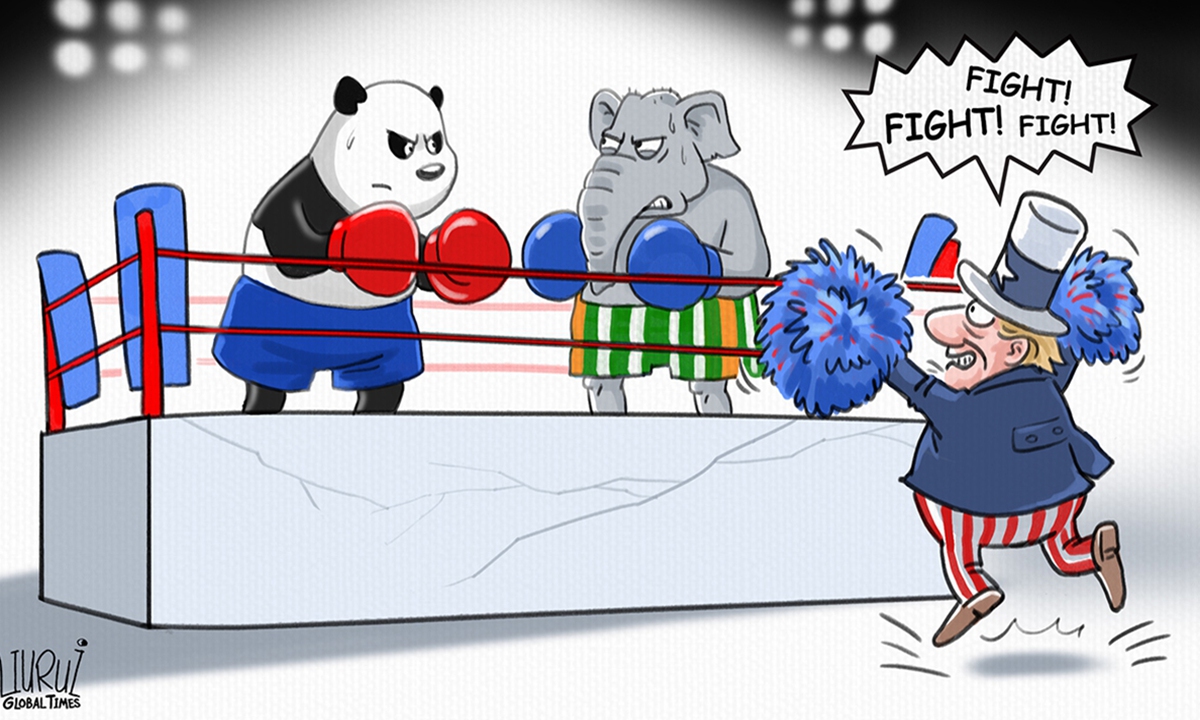
Illustration: GT
Amid signs signaling a thaw in China-India relations, the Voice of America (VOA) reported on Tuesday about India's recently released Project Zorawar light tank. The report claimed that the weapon is a direct response to "China's expanding military influence," highlighting the tank as new evidence of the extensive competition between China and India. It portrayed the tank as a clear signal of India's intention to prevent China gaining from advantages in the border crisis. This coverage attempts to use media influence to cause a rift in China-India relations, particularly to heighten border tensions between China and India and give the US a pretext to strengthen its strategy in the Asia-Pacific region.
Despite Indian media reporting in July that the Zorawar tank is "expected to be ready for induction into the army by 2027," VOA presented the Zorawar as a "game-changer for high-altitude warfare" without objectively assessing its potential deployment timeline or feasibility.
"The Zorawar tank will not significantly alter the balance of power on the China-India border," Long Xingchun, a professor from the School of International Relations at Sichuan International Studies University, told the Global Times, noting that the real factor affecting the border situation is the two countries' respective national strength. "The report by US media aims to sow discord in China-India relations, making it easier for the US to pull India into an anti-China circle," Long added.
Media manipulation, in which the significance of India's Zorawar light tank was magnified, has been used to stir up misunderstandings and tensions between China and India. This strategy aims to deepen divisions and conflicts, thereby sustaining US influence on India and in the Asia-Pacific region.
Over the past three years, China and India have maintained communication and coordination through military and diplomatic channels over the border issue. The foreign ministers of China and India held two meetings in July 2024, where they emphasized the need to step up talks to resolve disputes along their borders. This positive development has not only de-escalated tensions in the border region, improved bilateral relations, but also contributed to greater stability in the region.
However, the momentum has clearly rendered the US on tenterhooks.
The improvement in China-India relations is clearly detrimental to the implantation of the US global strategy. Washington is concerned that the easing of tensions between China and India could weaken US influence and strategic advantage in the Asia-Pacific. Additionally, India's recent statements dismissing the need for third-party interference in the China-India border issue may also give the US a sense of urgency about losing control in the region.
The US has never been a true friend to India. Its relationship with India has always been based on utilitarian exploitation, with the hope of turning India into a pawn to contain China. However, cooperation and improved relations align more closely with the mutual interests of China and India as representative powers of the Global South.
The recent emergence of positive momentum for the improvement of bilateral ties between China and India should be preserved and strengthened. And both sides must be vigilant against interference from other forces with ulterior motives.
The improvement in China-India relations could serve as a crucial driver of regional peace, and the US attempts at provocation and manipulation of public opinion reveal its hypocritical strategy. In the face of such interference, China and India should resolve differences through dialogue and cooperation and promote the stable development of bilateral relations. Only based on cooperation, can the two countries jointly meet future challenges and achieve a win-win outcome.
The author is a reporter with the Global Times. opinion@globaltimes.com.cn




